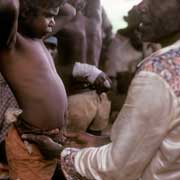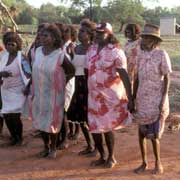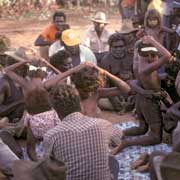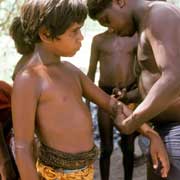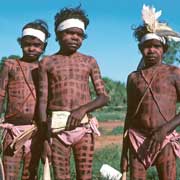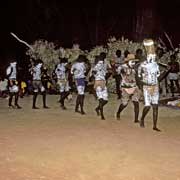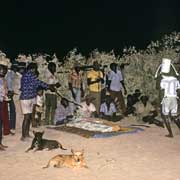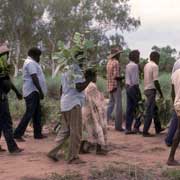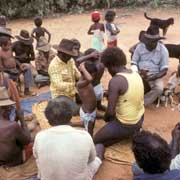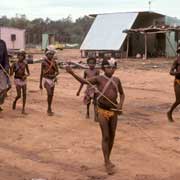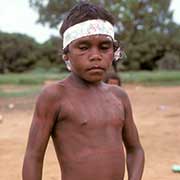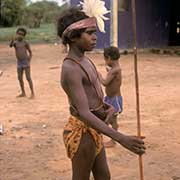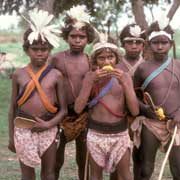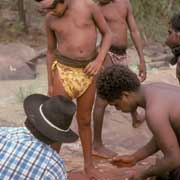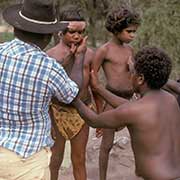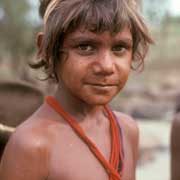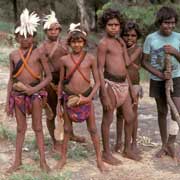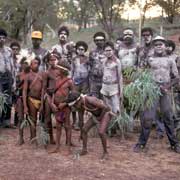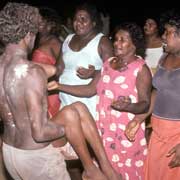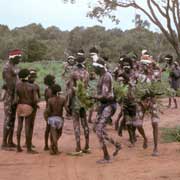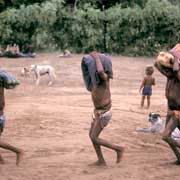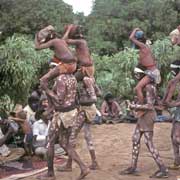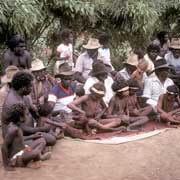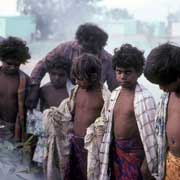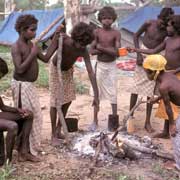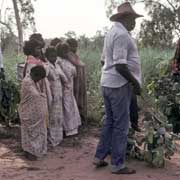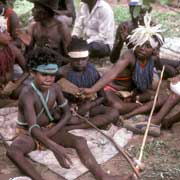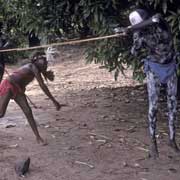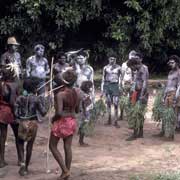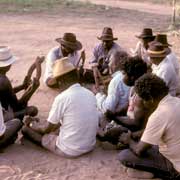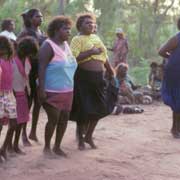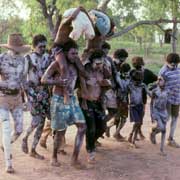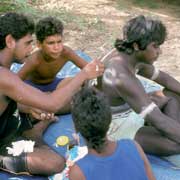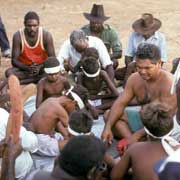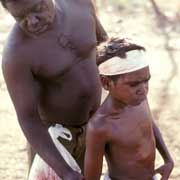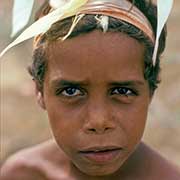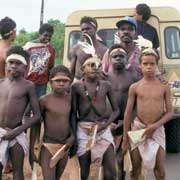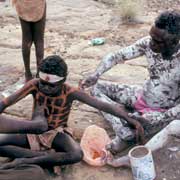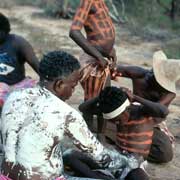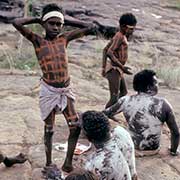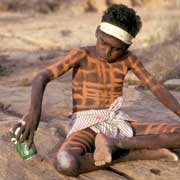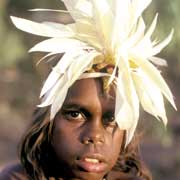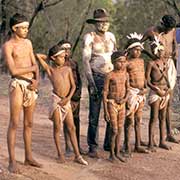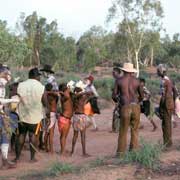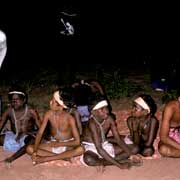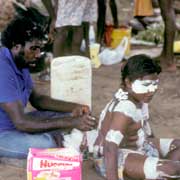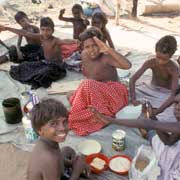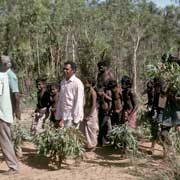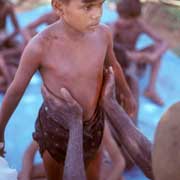Photos of Aboriginal Marndiwala Initiation Ceremonies in Borroloola, Australia
Aboriginal "Marndiwala" Initiation Ceremonies in Borroloola
Initiation ceremonies for boys are still a very important part of traditional life in the various communities of the Northern Territory. In the north the most common rituals are the "Mandiwa" or "Marndiwala" ceremony, performed from Barunga (near Katherine) in the west to Borroloola in the east and also in communities further north. Most of the photos on this page were taken in Borroloola, a small town just south of the Gulf of Carpentaria and the centre of the Yanyuwa Aboriginal people.
you may then send it as a postcard if you wish.
Boys are typically around ten years of age when they are taken from their mothers and led into a circle of men who, accompanying themselves with boomerangs clapped together, are singing the "kujika", song cycle, associated with the clan affiliation of the young initiates. A "hair belt", woven strands of human hair, is wound around their waists and they are not allowed to speak. Their mothers and other relatives dance a typical loose-kneed shuffle dance to the many stanzas of the "kujika". The boys then stay together under a bough shelter, looked after by an older man. The men carve small shards of bark and small spears and, after they have been painted all over with red ochre and decorated with head bands, or sometimes feather headdresses, are taken for a walk around the community looking for men who are in the right kinship relationship with them to dance for them on the final night. When they found someone, they try to hit him with their bark "boomerangs" or spears; this may mean running after their quarry, who tries to get out of the way under great hilarity. Another light-hearted aspect is the "Wungayi" women, older women who paint up with white clay and clown around, taking food away from houses, can seize other people's possessions and just cause havoc wherever they go. But it is all good fun and acts as a counterbalance to the seriousness of an initiation.
The afternoon before the initiates are taken to the "Jamangki" (ceremonial) ground for the evening ceremonies, they are taken to the bush and decorated: they are painted again with red ochre and decked out with a headdress of cockatoo feathers if their relatives have provided it, ready to be presented to their mothers again for the last time as an uninitiated boy. To accompany the "daru" initiates to the "Jamangki" (ceremonial) ground for the evening ceremonies a crowd of men and boys have painted themselves with "makurta", white clay, just slapped on, and they run in single file towards the initiates, dance around them and emit a high-pitched yell; the initiates then walk a few metres, stop again and the performance is repeated until finally the ceremonial ground is reached where men are singing while clapping boomerangs together and women dance their shuffling dance. The boys are then hoisted on the men's shoulders and carried to their fathers sitting in front of the windbreak on the "Jamangki" ground. That evening the men take the boys separately and remove the hair belts that were wound around their waists at the beginning of their ceremony. They are then carried to their mothers who take them back to the camp to spend the last night doing a woman's ceremony with their sons before they are made into young men. Meanwhile, the men sing all night the "kujika" or song cycle associated with the clan affiliations of the initiates. Young men dance the "Marndiwala" dance, a short quick stepping dance to the sound of the boomerangs clapped together, imitating the nervous movements of the frilled-neck lizard when excited. Then men dance in groups of tribal brothers, ending their short dance with a powerful yell.
The following day the men who have been marked to dance decorate each other with white clay and natural cotton wool (although nowadays, disposable nappies are ripped apart for the purpose!). This takes place in a secluded spot away from the women. At dusk the decorated dancers file in single line, preceded by a man with a burning torch and enter the ceremonial ground. While men sing and clap boomerangs together, men with elaborate headdresses dance towards the initiates who sit with their tribal fathers. After this people go off to eat: the dancers are fed by the families for whose sons they dance. Later that evening only the men return to the "Jamangki" ground and after each dancer has performed solo in front of the initiates, the "Marndiwala" dance is performed in groups of tribal brothers, non-stop until early morning.
At sunrise the initiates are walked quietly to a secluded spot and there they are circumcised, one by one. A camp is set up there and they stay, looked after by older men, until their wounds are healed. A couple of days later they are walked back to the general camp where a smoky fire of eucalyptus leaves is made and the boys have to stand in the smoke. They stay together, close to the general camp until a few days later they are painted all over with red ochre one last time; they are then free to join the general community once again.



